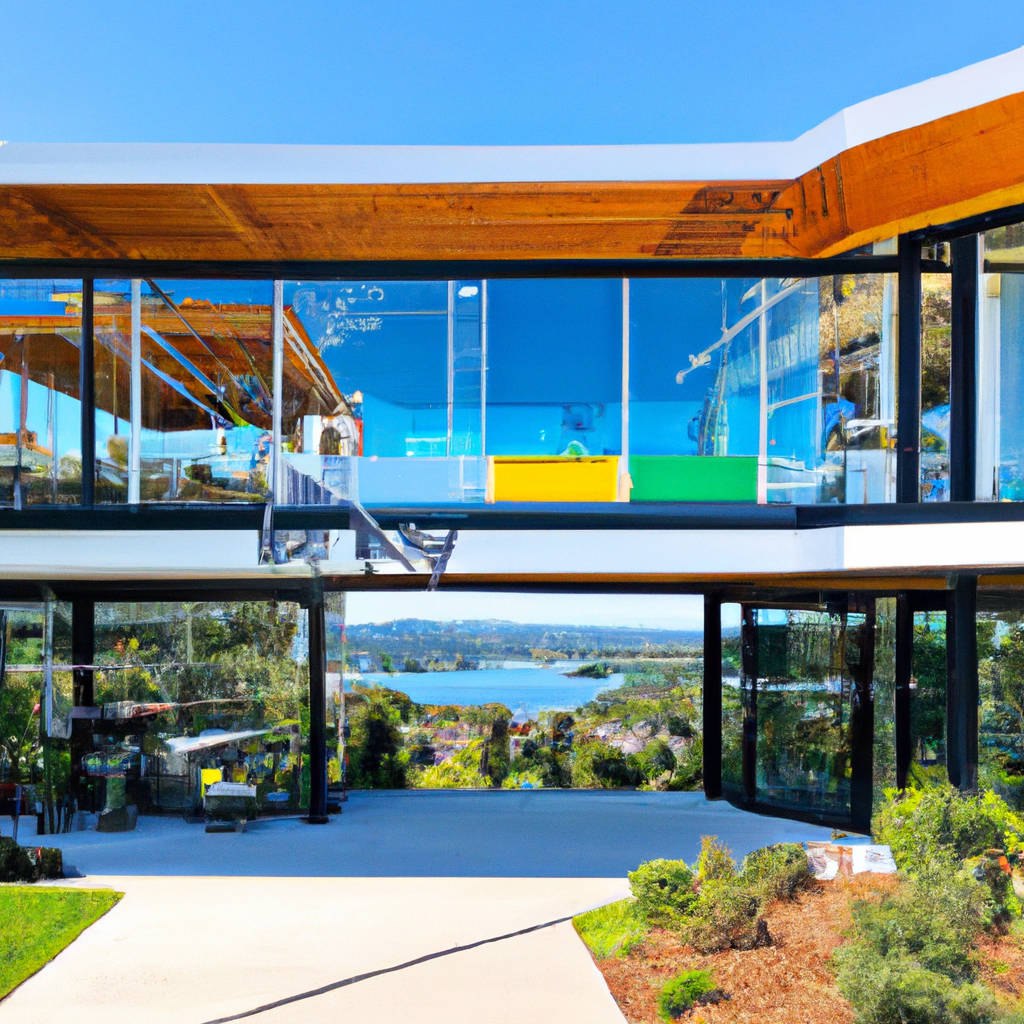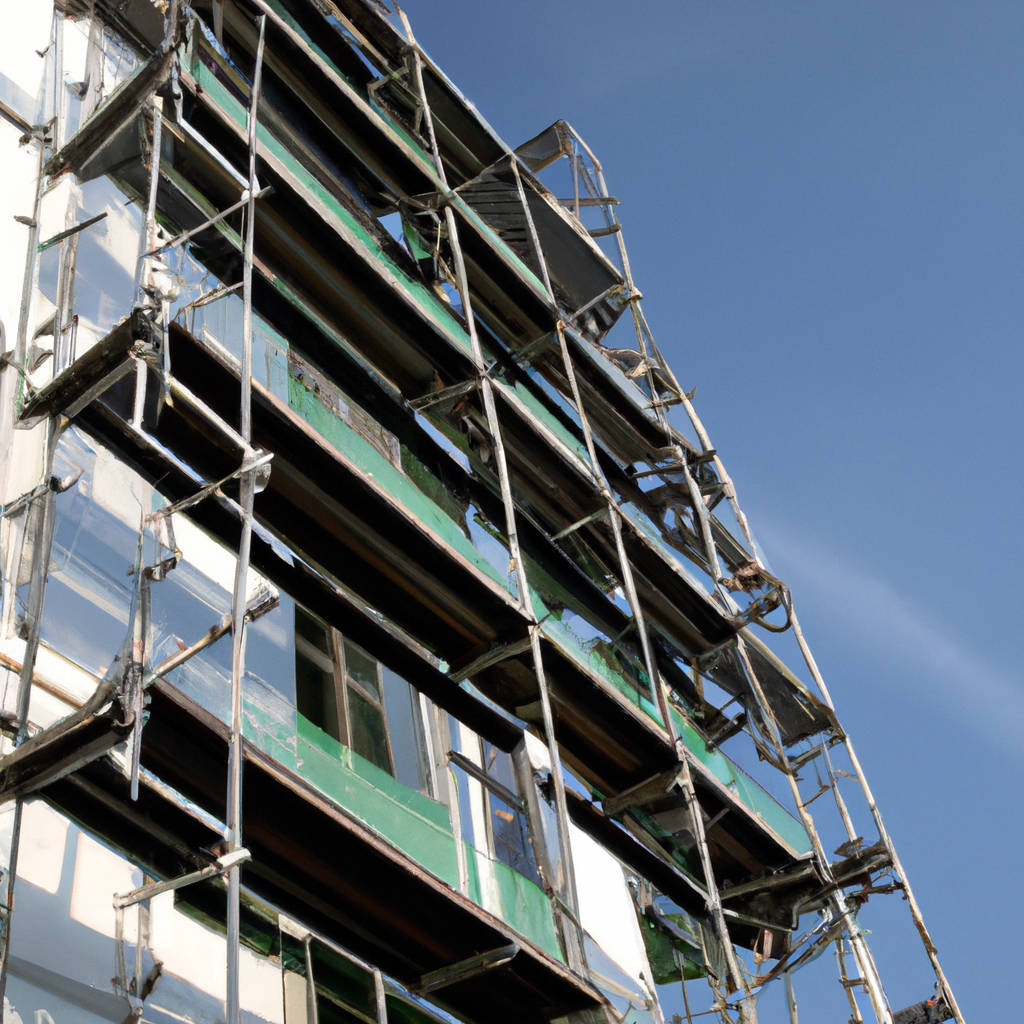Bay View, Google’s first-ever custom-built campus, has opened its doors to its employees and the world, marking a new chapter in the tech giant’s history. This innovative complex, located in Mountain View, California, showcases the company’s commitment to creating a sustainable, healthy, and highly collaborative workspace for its workforce. Strikingly different from the traditional corporate setting, Bay View’s design revolves around the concept of flexibility and openness, intending to foster creativity, productivity, and employee well-being. The campus boasts nine distinct buildings, each with its unique identity, all interconnected by bridges and walkways, promoting a sense of community and fluidity of interaction.
The architectural marvel features a multitude of amenities, including fitness centers, cafes, and outdoor spaces for relaxation and recreational activities. The buildings themselves are designed to maximize natural light, reducing the reliance on artificial lighting and thereby helping in energy conservation. Additionally, the emphasis on green and sustainable building materials underlines Google’s commitment to environmental responsibility.
In terms of technology, Bay View is equipped with the latest in smart building systems to ensure optimal comfort, safety, and efficiency. The campus incorporates cutting-edge tech features like adjustable workspaces, smart temperature controls, and advanced video conferencing facilities, reflecting Google’s pioneering spirit in the realm of technology. Furthermore, the campus is also designed to be adaptable, allowing for easy reconfiguration of spaces to meet evolving needs and work patterns.
However, the most distinctive aspect of Bay View is perhaps its underlying philosophy. The campus embodies Google’s belief in the power of collaboration and the importance of a balanced work-life environment. It is intended to be a place where employees can not only work but also learn, grow, and find inspiration. It encourages interaction and cross-pollination of ideas, fostering a culture of innovation that is central to Google’s ethos.
To cater to the diverse needs of its employees, Google has also ensured that Bay View is inclusive and accessible. The campus features various facilities and initiatives aimed at supporting employees with disabilities, promoting health and wellness, and nurturing a sense of belonging. The design also takes into account the needs of working parents, with provisions for childcare facilities.
In summary, Bay View represents Google’s vision of the future of workspaces. It serves as a testament to the company’s innovative spirit, commitment to sustainability, and belief in the importance of a healthy and supportive work environment. As the world continues to navigate the challenges of the 21st century, spaces like Bay View offer a glimpse into how companies can redefine their physical spaces to better meet the needs of their employees while also making a positive impact on the environment.

Crafting a Flexible and Healthy Workspace
Creating a flexible and healthy workspace is an essential measure that can significantly impact productivity, creativity, and overall well-being of the workforce. First and foremost, this involves designing an environment that caters to various work styles and preferences. Not every task or person requires the same type of space. Some may thrive in open, collaborative areas while others may need quieter, private spaces for concentration. The workspace should therefore offer a variety of areas to accommodate these differing needs.
Ergonomics also plays a crucial role in crafting a healthy workspace. This could mean investing in adjustable chairs, standing desks, or keyboard trays that promote good posture and reduce the risk of musculoskeletal disorders. Proper lighting is another factor to consider. Natural light can boost mood and energy levels, but if this isn’t possible, opt for full-spectrum lighting that mimics daylight.
In addition, incorporating elements of nature into the workspace can significantly enhance its health and flexibility. This concept, known as biophilic design, can involve adding plants, using natural materials, and mimicking natural light patterns. Studies have shown that such elements can reduce stress, improve cognitive function, and enhance mood and creativity.
Finally, promoting a culture of wellness is paramount. This could involve encouraging regular breaks, offering healthy snacks, and providing opportunities for physical activity, such as yoga classes or walking meetings. Also, giving employees the flexibility to choose when and where they work can greatly contribute to their well-being and productivity.
In conclusion, a flexible and healthy workspace is not about high-end furniture or trendy design. It’s about creating an environment that supports the diverse needs of the workforce, promotes physical health, and fosters a culture of wellness. By considering these elements, businesses can not only improve the well-being and productivity of their employees but also attract and retain top talent.
Elevating Green Building Standards
Elevating green building standards is an essential step towards achieving a more sustainable future. It revolves around the idea of enhancing the eco-friendly practices in construction, design and maintenance of buildings, which can significantly reduce the overall environmental impact. This can be achieved through energy efficiency, water conservation, waste reduction, and use of eco-friendly materials. These practices not only contribute to a healthier and more sustainable environment, but also offer economic benefits in the long run, as they lead to lower operational costs.
Elevating green building standards also means educating architects, engineers, contractors, and the general public about the importance of sustainable practices and how they can be incorporated into buildings. It encourages innovation and creativity in order to devise new ways of making buildings more sustainable. This can lead to the development of new technologies and methods that can revolutionize the construction industry, making it more efficient and less harmful to the environment.
Moreover, it includes the implementation of certification systems such as Leadership in Energy and Environmental Design (LEED) and Building Research Establishment Environmental Assessment Method (BREEAM). These certification systems provide a framework to create healthy, highly efficient and cost-saving green buildings. They are globally recognized symbols of sustainability achievement.
Elevating green building standards also requires the support of policy makers and stakeholders. This can be achieved through incentives, grants, and subsidies that encourage the adoption of green building practices. In addition, building codes and regulations can be updated to incorporate sustainable practices as a requirement rather than an option.
In conclusion, elevating green building standards is a proactive approach towards mitigating the impacts of climate change and creating a sustainable future. It is a collective responsibility that requires the participation of all stakeholders in the construction industry. The benefits that can be achieved through green building practices are numerous and invaluable, as they contribute to the preservation of our planet for future generations.

Innovative Architectural Features
Innovative architectural features are transforming the landscape of modern design, pushing the boundaries of what is possible and redefining our understanding of space and structure. These features, often a fusion of aesthetics and functionality, demonstrate the creativity and technical prowess of contemporary architects. For instance, green roofs, which integrate vegetation, have become a prevalent trend in urban areas. They not only enhance a building’s visual appeal but also promote environmental sustainability by improving air quality and reducing heat. Another exciting development is kinetic architecture. This approach involves designing buildings with parts that can move without losing their structural integrity.
Innovations in architectural features also include adaptive reuse, where old structures are repurposed for contemporary use, preserving their historical significance while meeting modern needs. It offers a sustainable solution to urban development. Additionally, parametric design, an approach that uses algorithms to create complex shapes and structures, allows architects to experiment with forms that would have been impossible to achieve manually.
Furthermore, digital fabrication techniques such as 3D printing are revolutionizing architecture by enabling the creation of intricate designs that were once unimaginable. This technology can create buildings with improved efficiency, reducing waste and decreasing construction time.
Lastly, smart buildings, equipped with automated systems and sensors, are becoming more prevalent. These buildings optimize energy consumption, enhance comfort, and improve overall building performance. Their systems can adapt to changing conditions, such as varying light or temperature, and can even learn from occupants’ behaviors to optimize their operations further.
These innovative architectural features not only challenge traditional design principles but also address critical issues such as sustainability, efficiency, and adaptability. They showcase the limitless possibilities of architectural design, encouraging us to reimagine our built environment. With these advancements, the future of architecture appears to be not only fascinating but also transformative in ways that could profoundly impact society and the environment.
Enhancing Employee Well-being
Enhancing employee well-being is a pivotal aspect of modern corporate culture that can significantly impact the overall productivity and efficiency of an organization. This multifaceted concept goes beyond the basic provision of health benefits and encompasses several other dimensions such as the physical, mental, and emotional health of employees, their work-life balance, and their overall job satisfaction.
In the realm of physical health, organizations can create an environment that encourages regular exercise, proper nutrition, and sufficient rest. Onsite fitness centers or sponsored gym memberships, provision of healthy meals or snacks, and ensuring manageable work hours can greatly contribute to this aspect of employee well-being.
Mental and emotional well-being can be fostered by implementing policies that reduce stress and promote a positive and supportive work environment. This might include providing access to counseling services, implementing flexible work hours, and establishing open communication channels for employees to voice their concerns and suggestions.
Work-life balance is another crucial element of employee well-being. When employees are able to balance their professional responsibilities with their personal life, they are more likely to be satisfied with their job and remain committed to the organization. This can be achieved through policies that allow for remote work, flexible scheduling, and ample vacation time.
Lastly, employee well-being can be enhanced by ensuring that employees find their work meaningful and fulfilling. This involves recognizing and appreciating their contributions, providing opportunities for personal growth and development, and fostering a culture that values collaboration and teamwork.
In conclusion, enhancing employee well-being is a comprehensive approach that requires attention to various aspects of an employee’s life. When organizations prioritize the well-being of their employees, they not only create a more positive and productive work environment but also contribute to the overall success and growth of the organization.

Future Plans for Sustainable Development
As we venture further into the 21st century, the focus on sustainable development has never been more critical. Governments, corporations, and communities worldwide are working towards implementing strategies that will foster a more sustainable future. These future plans include the integration of green technologies, promotion of renewable energy sources, waste management, and promoting responsible consumption and production patterns.
Green technology is at the forefront of these plans, with new innovations being developed to reduce our dependency on non-renewable resources. These technologies aim to lessen our environmental footprint and contribute to a more sustainable economy. They range from energy-efficient appliances and electric vehicles to solar panels and wind turbines.
Renewable energy sources such as wind, solar, and hydroelectric power are also a significant part of sustainable development plans. These sources provide an alternative to fossil fuels, reducing greenhouse gas emissions and their detrimental impact on our environment. The future will see an increased focus on harnessing these sources to meet our energy needs, with the goal of achieving a carbon-neutral society.
Waste management is another critical aspect of sustainable development. Future plans involve implementing more effective recycling programs, reducing food waste, and promoting composting. These efforts aim to minimize the amount of waste going to landfill, preserve natural resources, and reduce pollution.
Finally, sustainable development plans also involve promoting responsible consumption and production patterns. This means encouraging businesses to adopt more sustainable practices, such as reducing packaging and sourcing materials ethically. It also involves educating consumers about the environmental impact of their buying habits and encouraging more sustainable choices.
In conclusion, the future plans for sustainable development encompass a wide range of strategies, all of which aim to create a more sustainable and environmentally friendly world. These plans require the combined efforts of governments, businesses, and individuals, working together to ensure a sustainable future for generations to come.
